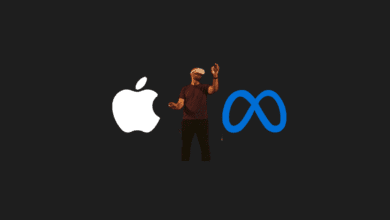NFTs: What Are They And How Do They Work?

NFTs, unique digital assets stored and traded on the blockchain, gained prominence in 2021. Metaverseplanet.net, a global consultancy, auditing, and taxation services company, has provided insights into the current state of the NFT market through its report titled ‘A Detailed Overview of NFT Transactions.’ This market allows artists to showcase and monetize their works, such as photos, videos, and audio files, by selling them as NFTs to collectors.
The report analyzes data from April 1 to September 25, 2021, focusing on ERC-721 transactions, the standard for NFT creation and trading on the Ethereum blockchain. Key highlights from the report include:
- The NFT market experienced significant growth throughout 2021. It expanded from $100 million in 2020 to $2 billion in the first half of 2021, reaching an impressive $22 billion in the initial nine months of the year.
- Despite a slight contraction in the last quarter of 2021, the NFT market continued to grow significantly in 2022.
This data underscores the rapid and substantial development of the NFT market, indicating its sustained momentum into the subsequent year.
Half are in 2 percent of collectors

The cyclical impacts of the pandemic played a significant role in the proliferation of NFTs. The primary driver of this technology remains the sale of NFT collections and artworks. However, NFTs serve various purposes, such as collaborative ownership of assets and the utilization of tangible assets to authenticate real estate or artworks.
The NFT market is characterized by a concentration of ownership, with the top 20% of collectors holding the majority of both market value and the quantity of NFTs. A small percentage, specifically 2% of wallets (collectors), possesses 50% of all NFTs.
Examining the first five transactions, it becomes evident that the average transaction value of an NFT increased by 60% in dollar terms compared to the preceding transaction. The first known NFT, ‘Quantum,’ minted by Kevin McCoy in May 2014, was sold for $1.4 million in November 2021. Works by artists such as Pak and Beeple attract substantial attention, with Beeple’s ‘Everydays: The First 5000 Days’ selling for $69 million at Christie’s, exemplifying the significant financial value associated with certain NFTs
It might require 10 years for the ‘Metaverse’ to turn into a piece of our lives

‘Metaverse,’ a Web 3.0 component that gained significant attention following the NFT craze, became the most searched term in the last quarter of 2021. This surge in interest was triggered by Facebook’s decision to rebrand itself as ‘Meta’ on October 28, following the public listing of Roblox in March 2021.
The transition from Web 2.0, marked by the shift from desktop computing to mobile computing and from local to cloud-based systems, took approximately 15 years. Web 3.0 and the metaverse are perceived as evolutionary rather than revolutionary, and their full integration into our lives may take another decade.
Web 3.0 is anticipated to be more localized, niche-focused, increasingly decentralized (potentially challenging the current mobile OS/app store distribution model in the next 5-10 years), and more adaptable in terms of payment mechanisms.
Creators are the primary drivers in the NFT space, with the Ethereum blockchain leading the market. However, NFT transactions are growing on alternative platforms like Solana and Tezos due to the high transaction fees on Ethereum. While NFT enthusiasm may see a temporary slowdown in the coming period, it is expected to continue evolving with the underlying technology.
You may also like this content
- The Metaverse: What it is, How to Enter, and Its Potential Impact
- Metaverse 5 Reasons Why its Awesome
- Metaverse Coins Buying Guide
Follow us on TWITTER (X) and be instantly informed about the latest developments…











